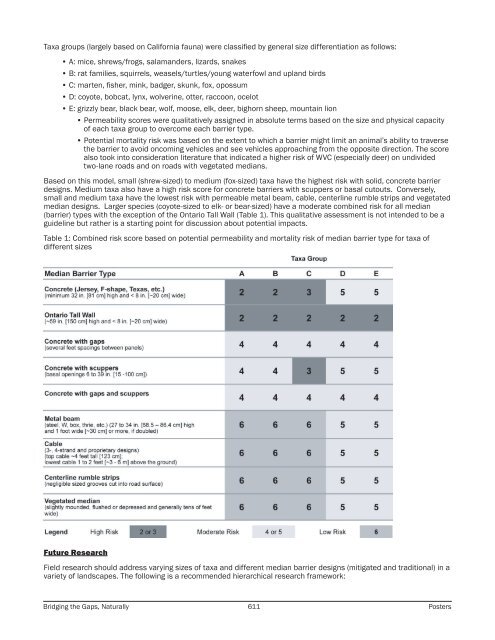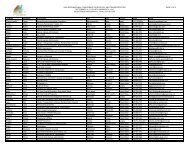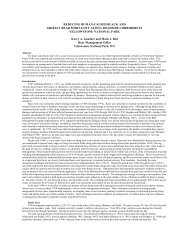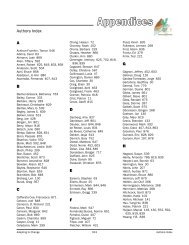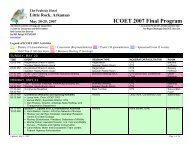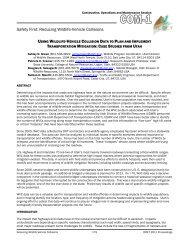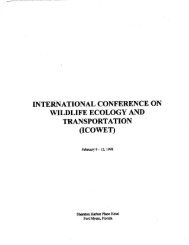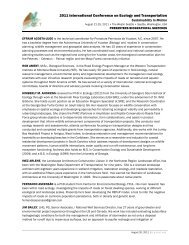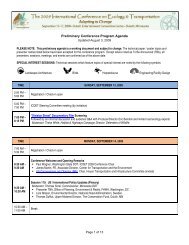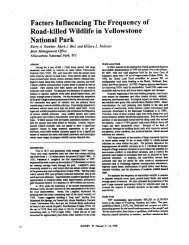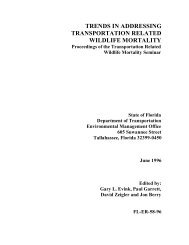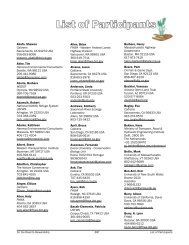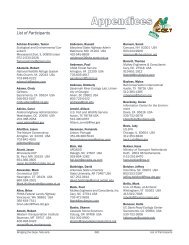Poster Sessions, pages 567-640 - ICOET
Poster Sessions, pages 567-640 - ICOET
Poster Sessions, pages 567-640 - ICOET
You also want an ePaper? Increase the reach of your titles
YUMPU automatically turns print PDFs into web optimized ePapers that Google loves.
Taxa groups (largely based on California fauna) were classified by general size differentiation as follows:<br />
• A: mice, shrews/frogs, salamanders, lizards, snakes<br />
• B: rat families, squirrels, weasels/turtles/young waterfowl and upland birds<br />
• C: marten, fisher, mink, badger, skunk, fox, opossum<br />
• D: coyote, bobcat, lynx, wolverine, otter, raccoon, ocelot<br />
• E: grizzly bear, black bear, wolf, moose, elk, deer, bighorn sheep, mountain lion<br />
• Permeability scores were qualitatively assigned in absolute terms based on the size and physical capacity<br />
of each taxa group to overcome each barrier type.<br />
• Potential mortality risk was based on the extent to which a barrier might limit an animal’s ability to traverse<br />
the barrier to avoid oncoming vehicles and see vehicles approaching from the opposite direction. The score<br />
also took into consideration literature that indicated a higher risk of WVC (especially deer) on undivided<br />
two-lane roads and on roads with vegetated medians.<br />
Based on this model, small (shrew-sized) to medium (fox-sized) taxa have the highest risk with solid, concrete barrier<br />
designs. Medium taxa also have a high risk score for concrete barriers with scuppers or basal cutouts. Conversely,<br />
small and medium taxa have the lowest risk with permeable metal beam, cable, centerline rumble strips and vegetated<br />
median designs. Larger species (coyote-sized to elk- or bear-sized) have a moderate combined risk for all median<br />
(barrier) types with the exception of the Ontario Tall Wall (Table 1). This qualitative assessment is not intended to be a<br />
guideline but rather is a starting point for discussion about potential impacts.<br />
Table 1: Combined risk score based on potential permeability and mortality risk of median barrier type for taxa of<br />
different sizes<br />
Future Research<br />
Field research should address varying sizes of taxa and different median barrier designs (mitigated and traditional) in a<br />
variety of landscapes. The following is a recommended hierarchical research framework:<br />
Bridging the Gaps, Naturally 611 <strong>Poster</strong>s


